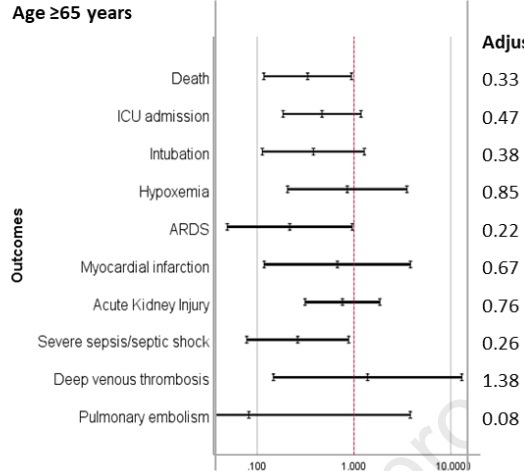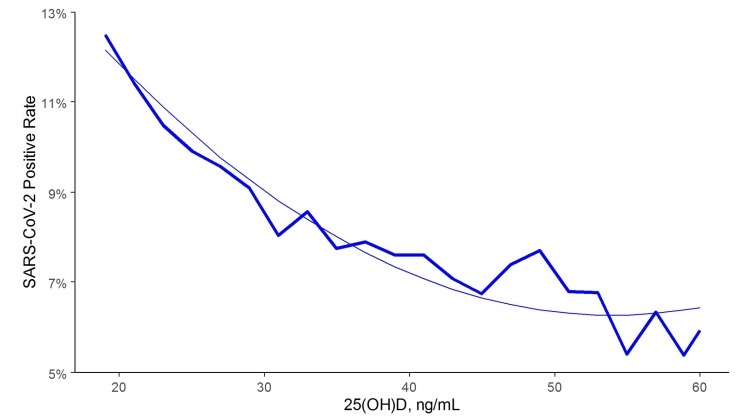3X less likely to die of COVID-19 if good level of vitamin D (seniors in Boston)
Association of vitamin D status with hospital morbidity and mortality in adult hospitalized COVID-19 patients
Endocr Pract . 2021 Mar 8;S1530-891X(21)00057-4. doi: 10.1016/j.eprac.2021.02.013.
Nipith Charoenngam, MD; Arash Shirvani, MD, PhD; Niyoti Reddy, MBBS; Danica M. Vodopivec, MD; Caroline M. Apovian, MD; Michael F. Holick , MD
Highlights
It has been proposed that vitamin D is an immunomodulatory agent that is protective against severity of COVID-19.
We found an independent association between serum 25-hydroxyvitamin D ≥30 ng/mL and decreased risk of mortality from COVID-19 in elderly patients and patients without obesity.
It is advisable to maintain serum 25-hydroxyvitamin D at least 30 ng/mL to reduce the risk of developing severe COVID-19.


Non-statistically significant rows are not shown above

📄 Download the PDF from VitaminDWiki
Objective
To determine the association between vitamin D status and morbidity and mortality in adult hospitalized COVID-19 patients
Methods
We performed a retrospective chart review study in COVID-19 patients aged ≥18 years old hospitalized at Boston University Medical Center between March 1 – August 4, 2020. All studied patients were tested positive for COVID-19 and had serum levels of 25-hydroxyvitamin D results measured within one year prior to the date of positive tests. Medical information was retrieved from the electronic medical record and were analyzed to determine the association between vitamin D status and hospital morbidity and mortality.
Results
Among the 287 patients, 100 (36%) patients were vitamin D-sufficient [25(OH)D >30 ng/mL] and 41 (14%) patients died during the hospitalization. Multivariate analysis in patients aged ≥65 years old revealed that
vitamin D sufficiency [25(OH)D ≥30 ng/mL] was statistically significantly associated
- with decreased odds of death (adjusted OR 0.33 , 95%CI, 0.12–0.94),
acute respiratory distress syndrome (adjusted OR 0.22 , 95%CI, 0.05–0.96), and
severe sepsis/septic shock (adjusted OR 0.26 , 95%CI, 0.08–0.88),
after adjustement for potential confounders.
Among patients with body mass index <30 kg/m 2, vitamin D sufficiency was statistically significantly associated with a decreased odds of death (adjusted OR 0.18 , 95%CI, 0.04–0.84). No significant association was found in the subgroups of patients aged <65 years old or BMI ≥30 kg/m 2.
Conclusion
We revealed an independent association between vitamin D sufficiency defined by serum 25(OH)D ≥30 ng/mL and decreased risk of mortality from COVID-19 in elderly patients and patients without obesity.
